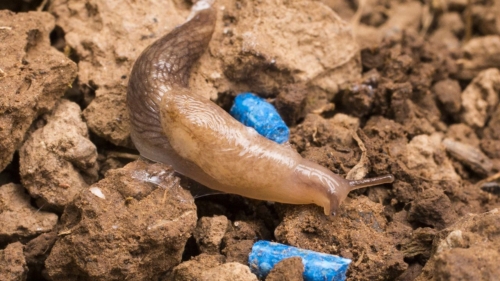Cover crop trials provide insight into slug activity

Contrary to popular perception that cover crops can further increase slug pressure over the winter period leading to problems with spring crops, a recent trial undertaken by Natural England has shown otherwise.
The field-scale trials, carried out in Oxfordshire and Hampshire, showed that cover crops such as mustard, winter vetch and forage rye, did not significantly increase slug populations compared to wheat stubble.
“Growers were encouraged to grow multi-species mixes of cover crops in the autumn to reduce nitrogen leeching,” explains Andrew Russell, Catchment Sensitive Farming Officer for Natural England.
Five to six plots per location were planted with cover crops, and a field of wheat stubble was used as a control. Mats baited with layers mash were placed in each plot, and slug numbers were monitored on a weekly basis.
“We didn’t want to incidentally increase the need for slug pellets, by encouraging the use of cover crops,” he says. “As this could potentially increase metaldehyde usage and have an adverse effect on the positive work we’re doing to protect water quality.
“We monitored slug pressure in the crops, and found little difference in pest pressure between the cover crop plots and the control stubble field. We also discovered that slugs had aversions to particular crops, such as mustard.”
“Increased nitrogen capture levels were also seen in the fields with cover crops, with N capture ranging from 21 to 62 kgN/ha across the sites.”
Cover crops have grown in popularity in recent years, as knowledge grows around the wider benefits they can bring to arable rotations, explains Geoffrey Bastard, Technical Specialist at Certis.
“Cover crops bring benefits to soil structure, organic matter (OM) and overall soil health, which is a key factor in producing healthy crops.
“However, as with any crop residue or stubble on the soil surface, slugs can naturally be an issue,” he adds. “Rolling fields when moisture is present to create a consolidated seedbed is recommended, and monitoring for slugs in the field is key.”
Ferric phosphate slug pellets are also an important part of controlling the pest and fit well with an IPM strategy. “Ferric phosphate has a low environmental profile and is suited to catchment sensitive farming areas, with no buffer zones required.
“A high-quality pellet such as Sluxx HP, also has the added benefit of anti-moulding protection and improved durability in wet weather, which is vital for the unpredictable weather that autumn typically brings.”
“When it comes to planting in the spring, ensure that crop residues are incorporated properly to help increase OM and reduce slug breeding habitats. Cultivation choice and ensuring a consolidated seed bed will all help to encourage quick establishment to get spring cereals up and away from slugs,” he says.